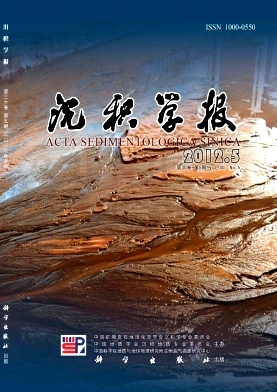Variations of Carbon Isotope and the Significance of Organic Carbon Burial in the Late Permian at Xinmin Section, Guizhou Province
- Publish Date: 2012-10-10
-
Key words:
- carbon isotope /
- fraction of organic carbon burial /
- acritachs, algae and microbes /
- late Permian /
Abstract: The fraction of organic carbon burial(forg) is calculated on the basis of the carbon cycle model with the records of carbon isotope composition on both carbonate and organic matter in the late Permian at Xinmin section, and the abundance of acritachs, algae and microbes which represents marine primary paleoproductivity is examined. We discuss the relationship among forg, marine paleoproductivity and the content of residual TOC in details. Residual TOC is determined by the combinations of the primary productivity, organic carbon burial fraction(forg) and burial redox conditions. But the data in Xinmin section and Meishan section show that the paleoproductivity plays a dominant role on the value of residual TOC. But this conclusion still needs further proof: we found that forg is mainly controlled by δ13Ccarb by Kump’s model, in which it concluded increased volcanism leads to only small changes in δ13Ccarb, and set the carbon isotope value of volcanic activity and weathering as δw =5‰. That is to say, a series of secondary environmental effects caused by volcanism were ignored, such as "volcanic winter", ocean acidification, smoke and other toxic substances and so on, all of which had great impact on the marine environment. However, largesized volcanism in the Late Permian could result in serious perturbation to marine carbon cycle. Therefore, the model still need to be further improved on calculating organic carbon burial fraction quantitatively or semiquantitatively during this special geological period.
| Citation: | Variations of Carbon Isotope and the Significance of Organic Carbon Burial in the Late Permian at Xinmin Section, Guizhou Province[J]. Acta Sedimentologica Sinica, 2012, 30(5): 806-816. |






 DownLoad:
DownLoad: